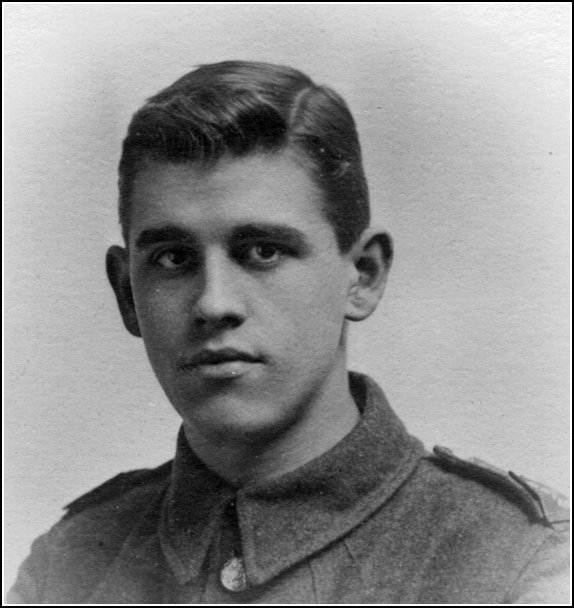
|
Updated 29/11/2025
In December 1920, two years after the appalling confusion over Arthur Whitaker's death in service, his body was laid in its final resting place - and his name was added to the Kildwick school war memorial.
Read the updated article on the three Farnhill men from the Whitaker family, all of whom were involved in the war one way or another. Part of the Farnhill WW1 Volunteers project.
|
|

|
Updated 30/8/2025
Read how our very own
Kildwick and Farnhill Brass Band took on some of the best bands in the country - and won !
This update includes a new photograph of this fantastic band.
|
|
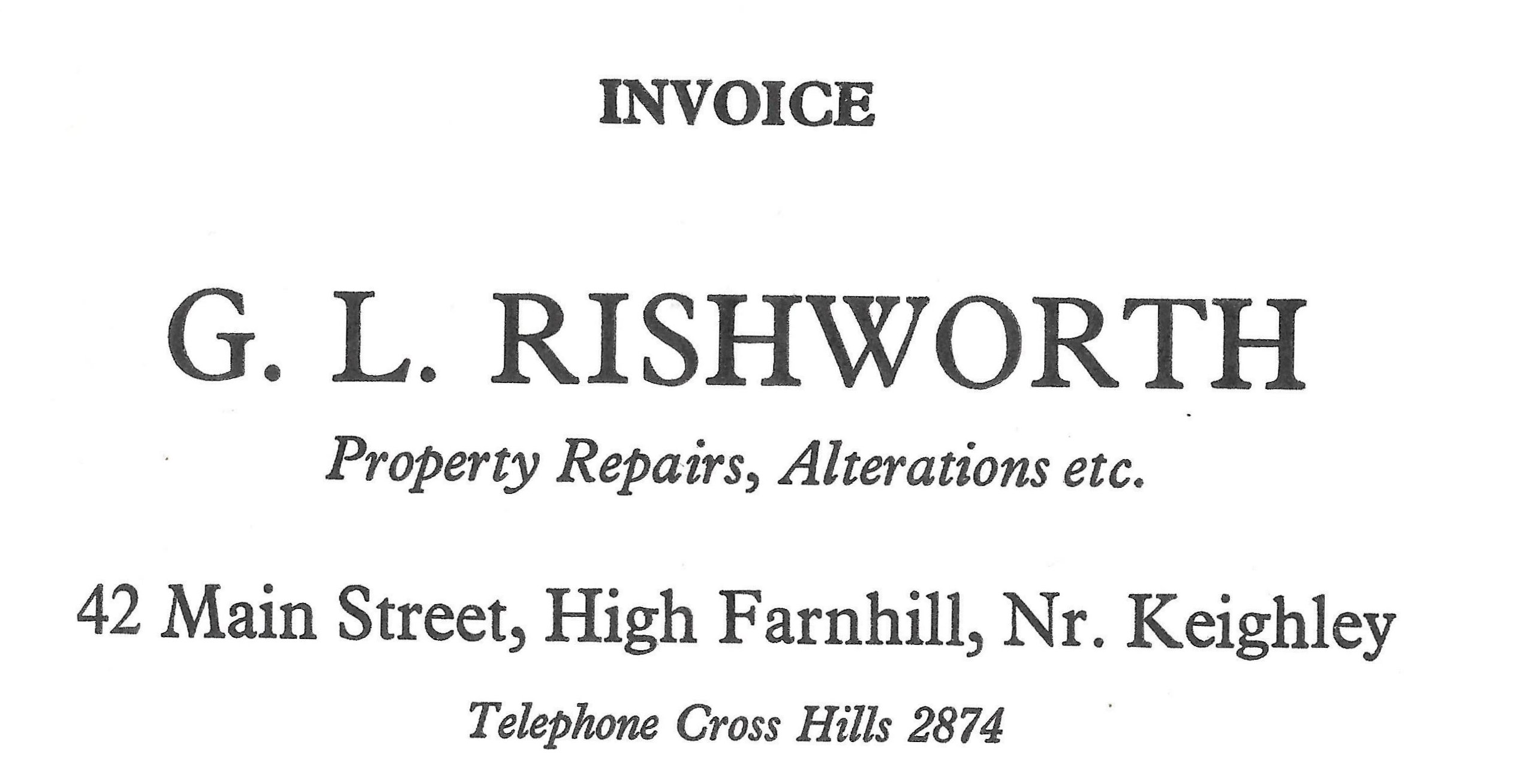
|
Updated 26/7/2025
The History Group has researched the retailers and the crafts-people in the two villages and have found that for over 100 years, between the mid-19th and the mid-20th century, almost all of life's needs were catered for.
This update includes lists of shops remembered by people who lived in the village.
Click here.
|
|

|
Updated: 31/5/2025
The recreation ground opposite Kildwick School is known as the Peggy Wilson field. But who was Peggy Wilson and why does the field bear her name.
This update includes information on the subsequent donation of a gazebo.
Read here.
|
|
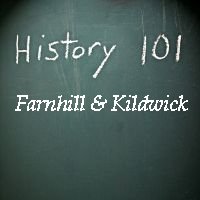
|
New item added 29/03/2025
We thought you might like to take a look at what other people have written about the history of Farnhill and Kildwick.
You can look at all the items or just read what we've just added - extracts from local almanacs.
|
|
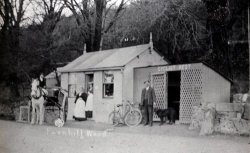
|
Updated 29/3/2025
Ever since August 2013, when we posted a short piece in our "Mysteries" section, we've been trying to work out where the building known as "Farnhill Wood Cafe and Cyclists Rest" was to be located. Many times we've thought we'd said the final word on the subject so this time we're going to be a little more cautious.
Read our current thoughts on Farnhill Wood Cafe and Cyclists Rest.
|
|
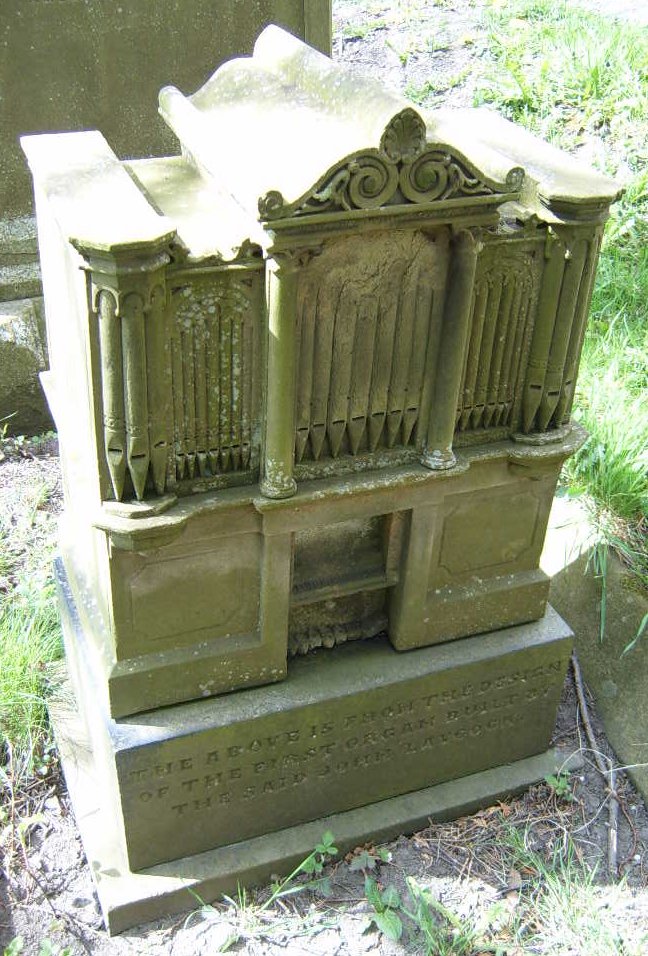
|
Updated 28/12/2024
There are a number of interesting graves in the graveyard of St. Andrew's Church but perhaps the most impressive,
although by no means the largest, is the so-called "Organ Grave".
In
this article we provide answers to three questions about this grave:
- Why does the grave have an organ on it ?
- Who carved it ?
- Does the organ still exist and, if so, where is it ?
You can also
read a short memoir, written in 1889, about John Laycock the organ-builder
and
view a video of the 1851 Laycock organ in Cowling Hill Chapel.
In our most recent update to this article we have included an appendix about Dr. John Laycock who has done much of the research on his family's grave.
|
|

|
Updated 26/10/2024
In 1738, Haworth Currer had the idea of creating a grand tree-lined driveway to link Kildwick Hall with the centre of the village.
This update has more information on the driveway plan including evidence of compensation paid by Haworth Currer for loss of pasture due to the trees.
|
|
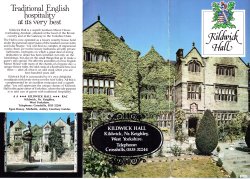
|
Updated: 29/01/2022
After the Kildwick estate was broken up, in 1946, Kildwick Hall passed through a number of private hands and was used for a number of commercial ventures.
This article tells the story of the later owners of Kildwick Hall. It also investigates some of the people who were tenants of the Hall when it was still part of the Kildwick estate.
This update includes a significant amount of new material uncovered in our recent researches.
|
|

|
First published: 28/07/2024 and 31/08/2024
The 1846 tithe commutation document provides a lot of information about what Farnhill was like in the middle of the nineteenth century. We've used it to produce two articles:
The owners and tenants.
and
The tithe map (1845)
|
|
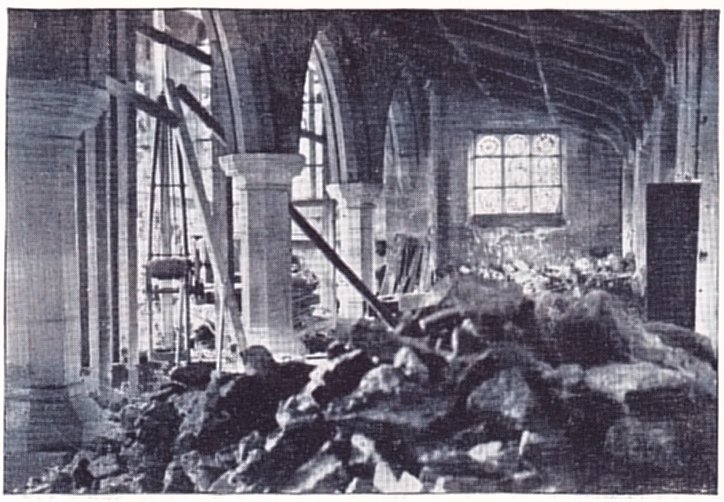
|
Updated: 31/08/2024
By the end of the 19th century Kildwick Church was in a bad way. At least one beam had fallen from the roof, smashing one of the pews below, and an architect reported that the building could fall down at any time. This article continues our researches into the work carried out to save "the Lang Kirk of Craven", and looks at how services were conducted while the church organ was out of action.
|
|
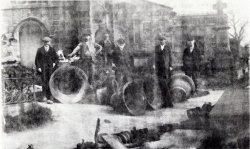
|
Updated: 28/07/2024
We've updated our piece on the bells at St. Andrew's church
with details of the first-ever "History of the Lang Kirk", a booklet produced to raise funds for the new bells in 1914.
|
|
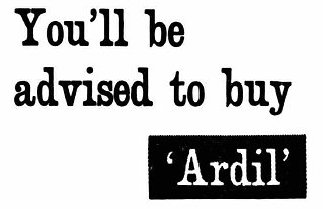
|
First published: 29/06/2024
Perhaps and perhaps not - but if wasn't, then what was going on with all the peanuts ?.
Click here.
|
|

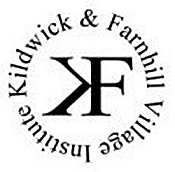
|
Updated 29/06/2024
The Institute was founded in 1911 and was the gift of the Brigg family
We've researched how the Institute came into being using newspaper reports of the period. We've also recently found out more information about the building before it became the Institute.
Read the full story here.
|
|

|
Updated 25/05/2024
From the 16th to the middle of the 20th centuries, the village of Kildwick was owned by the Lord of the Manor. In a series of short articles, we tell the story of
the owners of Kildwick Hall and the Kildwick Estate.
The updates made to our articles, originally published in 2017, revise the old texts with details of recent research.
|
|
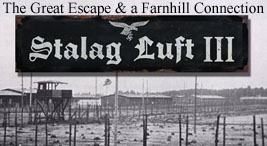
|
Updated: 30/3/2024
This month marks the 80th anniversary of the mass escape of allied PoWs from Stalag Luft III during WWII - an event that became famous as "The Great Escape".
This update is a major revision of our original article, with lots of additional information about the Farnhill family who had a significant connection to the escape.
|
|
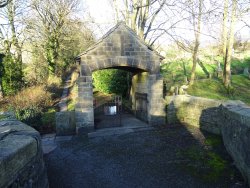
|
First published: 30/12/2023
Thomas Appleby took up the role of headmaster of Kildwick School in 1900. From then until his death, in 1926, he became so involved in village life that his neighbours and friends thought he was worthy of no less than three memorials.
Click here to read more about Thomas Appleby and the memorials erected to him.
|
|
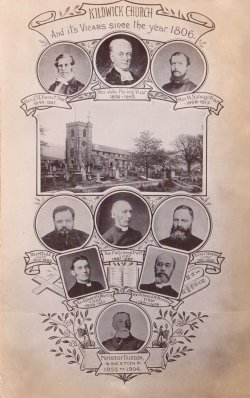
|
Updated: 30/12/2023
Mike Green has been the incumbent at St. Andrew's for a little while now, and it seems appropriate to update our article on the vicars of Kildwick.
As you might expect, they were a mixed bunch; and this article has been subtitled "the good, the bad; the loved, the hated; and at least one who was of "unsound mind".
|
|
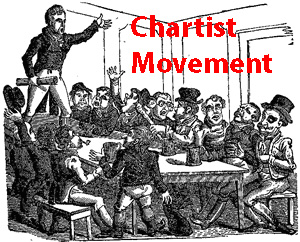
|
Updated 28/10/2023
Chartism was a Victorian era working class movement for political reform in Britain between 1838 and 1848. Read about
the Chartist Movement in Farnhill and Kildwick.
Part 1 - 1815 to 1845
Part 2 - 1848...a turning point in history when history refused to turn (A J P Taylor)
There are also a couple of interesting podcasts on the subject that you might like to listen to:
"In Our Time" - BBC - Feb 2023
"History Extra Podcast" - May 2023
(starts 1 minute in)
|
|
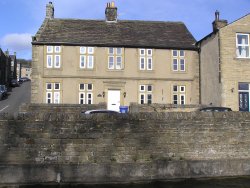
|
First published 24/09/2023
The Mullions, on Newby Road, has always been a bit of a mystery. It's obviously an old building but one that doesn't seem to have had any history. Now a member of the History Group has uncovered its story.
Click here.
|
|
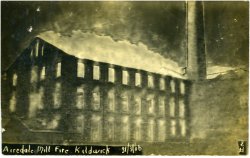
|
Updated 24/09/2023
Two destructive mill fires in Farnhill, one in December 1905 and the other in March 1906,
effectively ended industrial development within the village, as well as causing significant unemployment and hardship. Read our article about
the devastating fires of 1905 and 1906, which we have updated with additional information on the history of what happened to Farnhill Mill after the 1905 fire.
You can also view a
slideshow of photographs taken at the time.
|
|

|
Updated 24/06/2023
We first encountered the post-war Welcome Home Committee when we wrote our article about Farnhill's
connection with the Great Escape. Since then we've done further research into some of the activities organised to
welcome back the men and women who went away to war, culminating in a performance of Hadyn's Creation and the Kildwick Races. Along the way they managed to raise 1000 pounds.
This update provides the full programme for the final fund-raising event; the
Kildwick Races.
|
|

|
Updated: 28/05/2022
There was a major reorganisation of local government in 1974, as a result of which
Farnhill became part of North Yorkshire whilst Kildwick was allocated to Bradford Metropolitan District.
We have updated our article on the nine year struggle to reunite the "twin" villages with information from the minutes of Kildwick Parish Meeting.
|
|
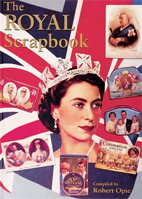
|
Updated 29/4/2023
Read our full series of articles on how Farnhill and Kildwick organised and celebrated Coronation and Jubilee events in the twentieth century.
|
|
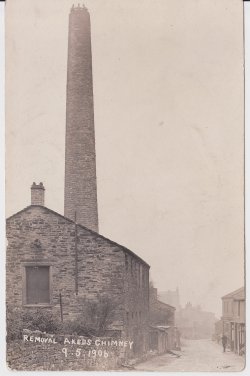
|
First published: 25/3/2023
Aked's Mill stood on the west side of Farnhill Main Street, on the site of what is now a terrace of
private houses opposite the Institute; numbers 31 to 37. The mill was beset by financial problems and had a short life - but parts of it do have a continuing legacy. Read here.
You may also like to read about the fires that destroyed
two other Farnhill mills in 1905 and 1906. A slideshow is also available.
|
|
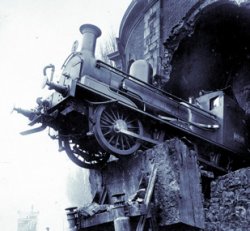
|
Updated 30/09/2017
Many people will be aware of the fatal rail crash that occurred at Kildwick in 1875.
The History Group has made a major study of this terrible accident, and we report our findings in a series of articles.
Part 1 - The accident
Part 2 - Inquests, inquiries and reports
Part 3 - The trial of Harrison Palfreeman
Part 4 - Why was the crash so bad ?
Appendix 1 - The opening of the new Kildwick and Crosshills station (1889)
Appendix 2 - Surely it can't happen again ? (1989)
You might also like to view
a slideshow of old photographs of Kildwick railway station.
|
|
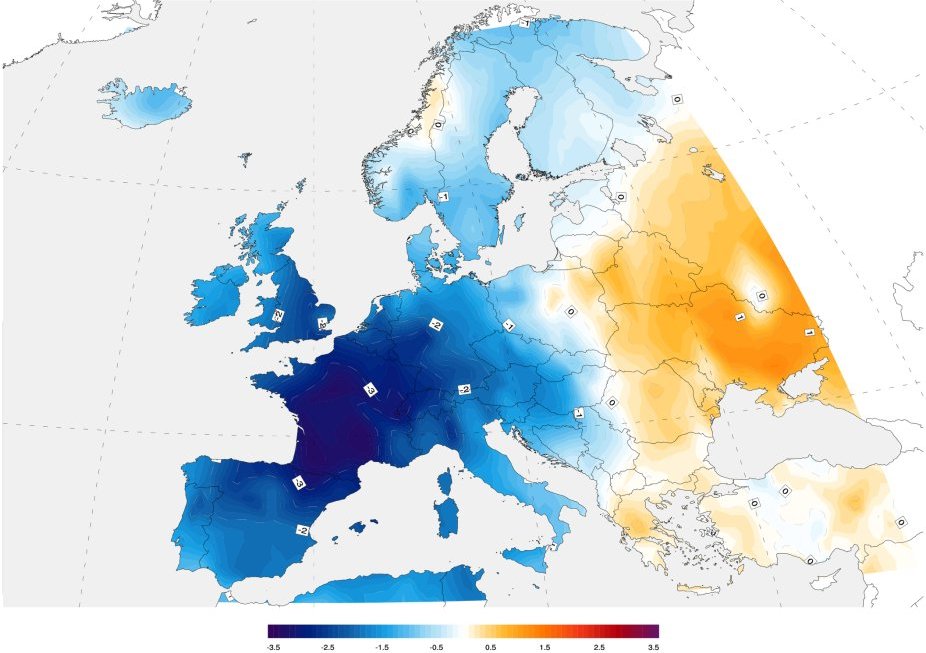
|
First published: 31/12/2022
The weather throughout 1816 was poor around the world. In parts of Europe and N. America it was referred to as the "year without a summer" or "eighteen-hundred and frozen to death". In this article we examine parish records to see if the impact of this extreme weather event was felt the local area.
|
|
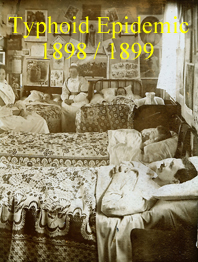
|
Updated: 29/10/2022
The Local History Group is involved in a major project researching the Kildwick typhoid epidemic, which took 10 lives
and put a further 40 villagers in hospital.
There's always more to discover about this terrible event in Kildwick's history and
in this update we examine how Farnhill Parish Council responded to the epidemic happening in the village next door.
Click
here to view our full series of articles on this subject.
|
|

|
Updated 27/08/2022
The history of
education in Kildwick could go back as far as Tudor times.
This update includes information taken from the 1682 Kildwick Hearth Tax returns.
|
|

|
First published: 28/05/2022
It is a little surprising that very little has been written about the history of Farnhill Hall.
We've managed to collect a number of short pieces, mostly written in the late 19th or early 20th centuries, by a number of different authors (some unknown).
|
|

|
Updated: 26/03/2022
An update on the time, just after WW2, when Roberts' Brothers circus used to over-winter near Kildwick. We have information about Maharanee, the elephant.
Read the updated article.
|
|

|
Updated: 26/02/2022
In 2014, to coincide with the 75th anniversary of the start of WWII, we published the results of our researches into the
nine men of Farnhill and Kildwick who died whilst serving during that conflict.
This new update includes material produced by Dorothy Ramser for International Bomber Command Centre (IBCC) digital archive, at Lincoln University.
|
|
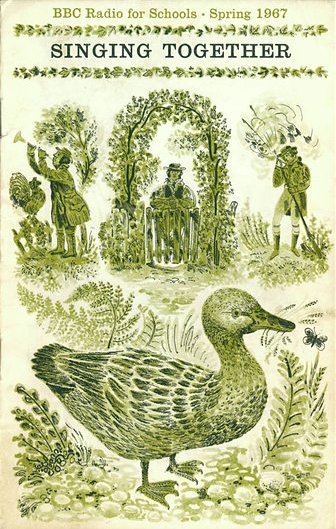
|
Updated: 26/02/2022
William Appleby was a major media celebrity, with a massive following among the youth of his day; who was responsible for over 70 publications - several of which are included in the US Library of Congress; had both a building and a piece of music named after him; was awarded an OBE; and had a charity founded in his memory. He was, probably, the most famous Kildwickian that no one has heard of.
This update to our original article provides some additional information on his early life in Kildwick.
|
|
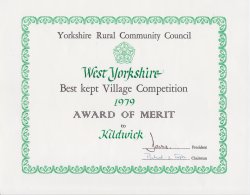
|
First published: 31/07/2021
From the late 1970s until 1990 Kildwick participated in the "Best Kept Village Competition" organised by the Yorkshire Rural Community Council - and it's record was very good ! Read the details here.
|
|
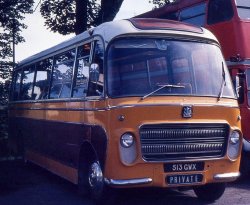
|
Updated 29/05/2021
The story of Arnold Benson coaches, a company that operated from Kildwick between the end of WW2 and the 1970s. Our article now updated with an advertisement from the programme for the Sutton Baptist Bazaar, in 1954.
We also have a recording of
the late Alan Hargreaves talking about his friend Edwin Shuttleworth and the Arnold Benson Coach Company - including how they got a large bus through a very small gate !
|
|
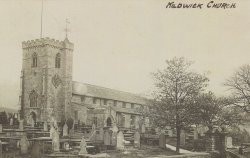
|
Updated 27/03/2021
From the dissolution of the monasteries in the 1530s to the restoration of the monarchy in 1660 religious life in England was in an almost permanent state of upheaval. Inevitably Kildwick parish became involved in this and, between the 1580s and 1660, the church was home to a succession of
radical Protestant churchmen.
We have updated this article with more information about Kildwick's part in the Pendle Witch Trials and the book on witches and witchcraft written by a curate of St. Andrew's.
|
|
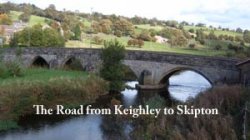
|
Updated 26/09/2020
From the Romans to the present day, the
road from Keighley to Skipton has changed considerably.
The route you would have taken depends on when you were travelling.
In a new appendix to our article on the development of the road from Keighley to Skipton
we consider plans dating from the early 1960s for a trans-Pennine route that would have severely impacted Kildwick and the nearby townships.
|
|

|
Updated 26/09/2020
This update to our article on the remarkable ships named HMS Kildwick includes two letters from a member of the crew sent to the vicar of Kildwick in April 1945.
We're also taking the opportunity to remind you of the wonderful two-part wartime memoir written for us by Cyril Dennis who, as a teenager, served on board HMS Kildwick during WW2.
Part 1 of Cyril Dennis's wartime memoir
Part 2 of Cyril Dennis's wartime memoir
|
|
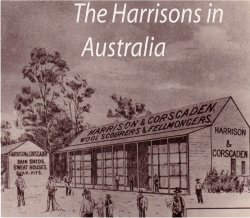
|
First posted 26/04/2020
A
family history that begins in Kildwick in 1671 and continues, to this day, on the other side of the world.
|
|
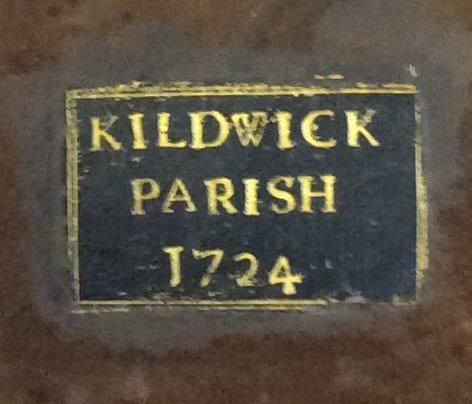
|
First posted 26/10/2019
At the end of 2018, the History Group was asked to help St. Andrew's Church find a new home for the
Kildwick Parish Library, a collection of over 70 antique books, on various theological studies (and a cure for tooth-ache). In January 2019 a small group of us gathered in the Parish Rooms and began the task of photographing and cataloguing. A process that would lead, eventually, to the library been given a new home in the Rare Books Collection of York University.
Read about the Kildwick Parish Library.
|
|
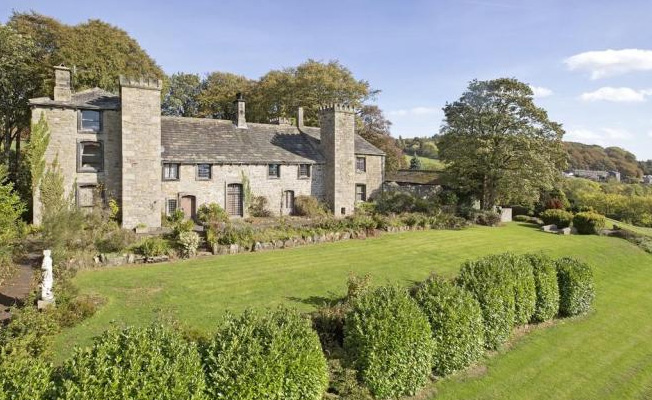
|
First posted 28/09/2019
Some time ago, members of the History Group were given access to Farnhill Hall. Among the people who came along with us was the late Alison Armstrong, local archeologist of vernacular buildings. This is
the report she subsequently wrote for us.
|
|
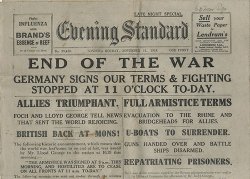
|
Posted 24/11/2018
This article, from the Farnhill WW1 Volunteers website, examines the thoughts of some local people on Armistice Day - 11th November 1918.
|
|

|
Posted 29/09/2018
In 1764 the Archbishop of York went on a "tour" of his diocese - known as a Visitation.
Prior to this, a questionnaire was sent out for the clergy of each parish to complete and return.
In Kildwick, the questions were answered by the vicar, Rev. John Dehane. His responses give us an interesting snapshot of the parish in 1764.
In
this article
we give the full text of the 12 questions asked, and Rev. Dehane's responses to them.
|
|

|
Updated 29/09/2018
Between 1909 and 1914, the last Saturday in July would see up to 5000 people gather on both banks of the river Aire, below the bridge, to watch the
annual swimming carnival. We've updated our original article with some more material.
In addition to the article, we also have a
short slideshow, made up of the photographs of the carnivals that have been contributed to our archive.
|
|
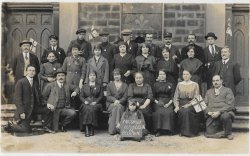
|
Updated 25/08/2018
At the start of WW1, as German troops overran their country, over 250,000 Belgians came to Britain as refugees. It was the single largest influx of refugees in this country's history.
Some of them came to this area and
this article, updated with photographs and information about the refugees in Crosshills, tells their story.
|
|
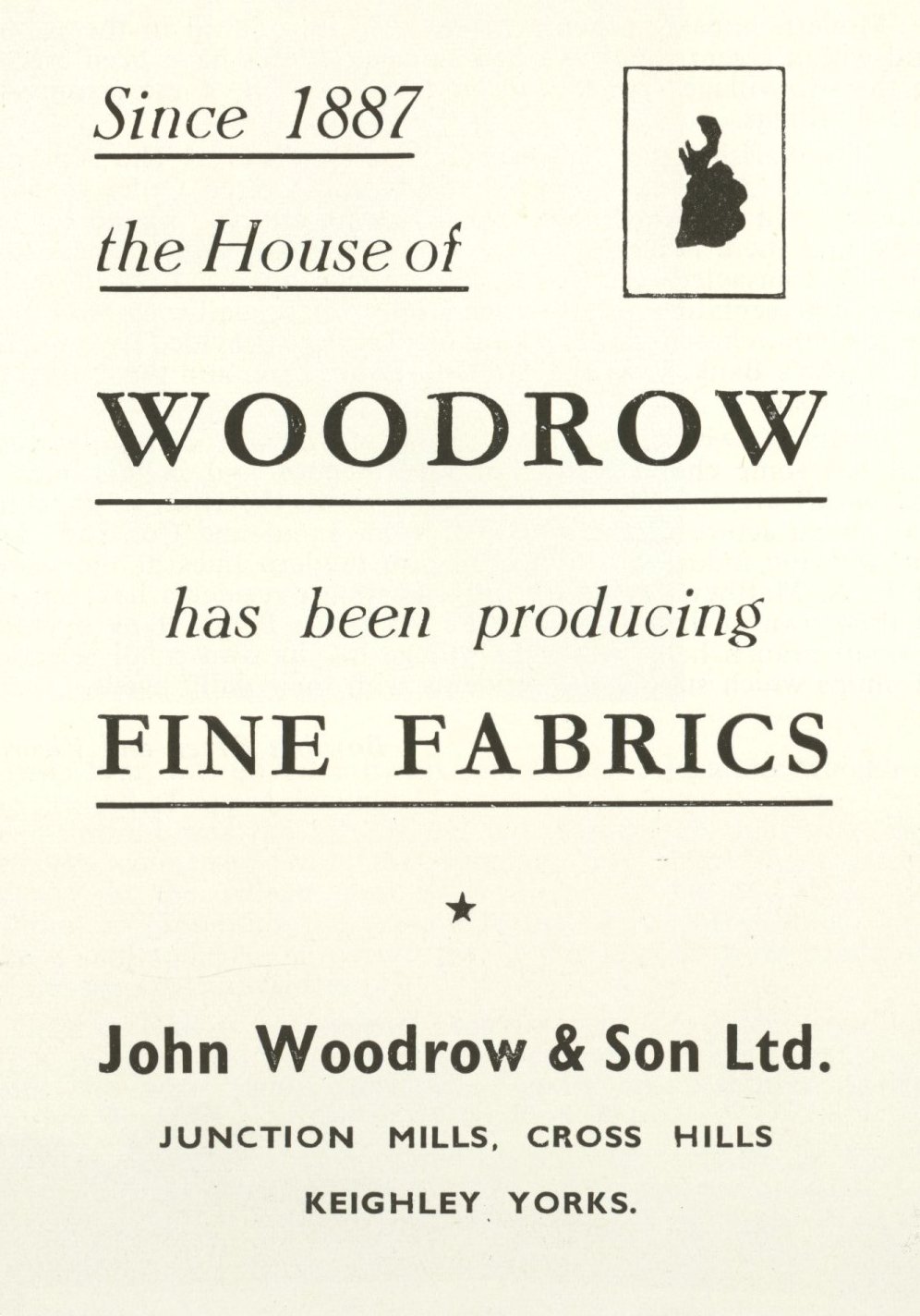
|
First posted 28/07/2018
In the later years of the 19th century and the early part of the 20th, most employment was provided by the very many local mills.
The loss of two mills in Farnhill at the end of 1905 and early in 1906 had a devastating effect on local people: they no longer had work on their doorstep they had to bicycle or walk to work; some chose to move to other townships.
One of the nearby mills that continued to provide work was Woodrow's at Junction.
Charles Alexander Hargreaves, known as Alec, left school at the age of 13, in 1906, and - apart from serving abroad during WW1 - was at Woodrow's Mill for all his working life, a total of 49 years.
Towards the end of this time he wrote a memoir of his period there:
A working life at Woodrow's Mill.
|
|

|
First posted 28/04/2018
Charles Wilcock, a good friend of the History Group, has been researching his forebears and his written us an article about one of them. His name was Jonas Davy and he went on to be a detective with the Bradford Police Force.
Originally written as a piece for the Bradford Police Museum, here is the story of Jonas Davy - the Farnhill Detective.
|
|

|
Updated 26/08/2017
We've updated our article on the introduction of gas lamps in Kildwick with further information about the origins of the Lighting Committee.
Read our article and Cecil Snowden's memoir about being a lamp-lighter, by clicking below:
Lighting Kildwick - 1892 to 1919 (Updated 26/08/2017)
A few of my Life's activities - a memoir by CR Snowden
|
|
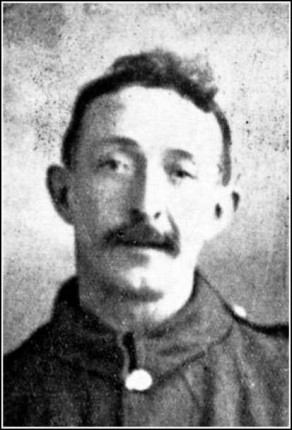
|
Posted 24/06/2017
If you were in Kildwick on the afternoon of Saturday 3rd June you may have heard the bells of St. Andrew's church ringing a Quarter Peal of Plain Bob Triples. This wasn't for a posh wedding but was to commemorate the death of William Mosley, of Farnhill, a former bell-ringer who was killed in action on 3/6/1917.
We've put together
a short biography
of William Mosley as part of the
Farnhill WW1 Volunteers Project.
|
|
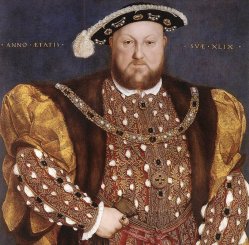
|
Updated 27/05/2017
Using the family history notes of the late Christopher Rycroft and information provided by Lancaster Herald at the College of Arms, we have
researched the remarkable story of John Rycroft, who went from Kildwick to serve in the court of Henry VII
and Henry VIII, and the charity he founded in his native village: the Kildwick "Winter Silver".
Read the results of our
major research project. You can also examine
Christopher Rycroft's family history notes - courtesy of Mrs. Nancy Rycroft.
|
|
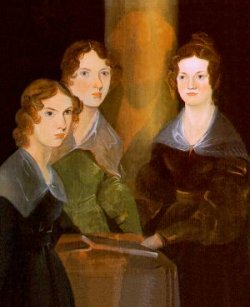
|
New and Updated 25/02/2017
There are so many stories about connections, or supposed connections, between the Brontë family and Kildwick. In this article, Graham Taylor examines some of these and tries to work out which are true and which might be false.
To accompany this update, Bronte expert and good friend of the History Group, Isobel Stirk, has written a short piece of fiction imagining how it might have been if Charlotte really had visited the village when she was governesss at Stone Gappe. Read Kildwick's 1839 visitor - maybe ?.
|
|
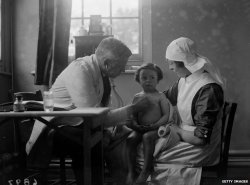
|
First posted 26/11/2016
These days, thanks to the widespread use of antibiotics and early-years inoculations, most childhood diseases are kept largely under control. They are irritants (albeit sometimes painful for individuals) rather than dangerous, or even life-threatening.
However, in the early 20th century, this was not the case and the appearance of an infectious disease in a single child could quickly result in it spreading through the whole community. Sometimes with dangerous or even fatal consequences.
The Kildwick School log book for the period 1907 to 1920 shows how common these diseases were and the steps that the school and the local authority could take to prevent them spreading. The log also reveals the start of what would become universal health care: with the gradual appearance of school medical inspectors and dentists, and a nurse examining children for head-lice.
Read about childhood diseases in the early 20th century.
|
|
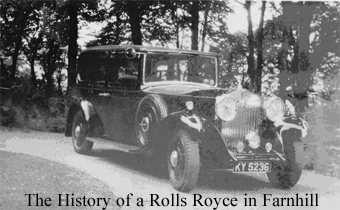
|
Updated 29/09/2016
From the days of chauffeur-driven cars, Farnhill has an
interesting story to tell of a car (that still exists today) and the man who drove and maintained the vehicle.
Read about the
Farnhill Hall Rolls Royce.
|
|
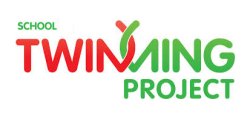
|
Updated 24/09/2016
For three years prior to WW1, Kildwick school had a series of exchange visits with a church school in Stepney, East London. Read about
how the schools were twinned
and the story of a life-long friendship that developed.
|
|
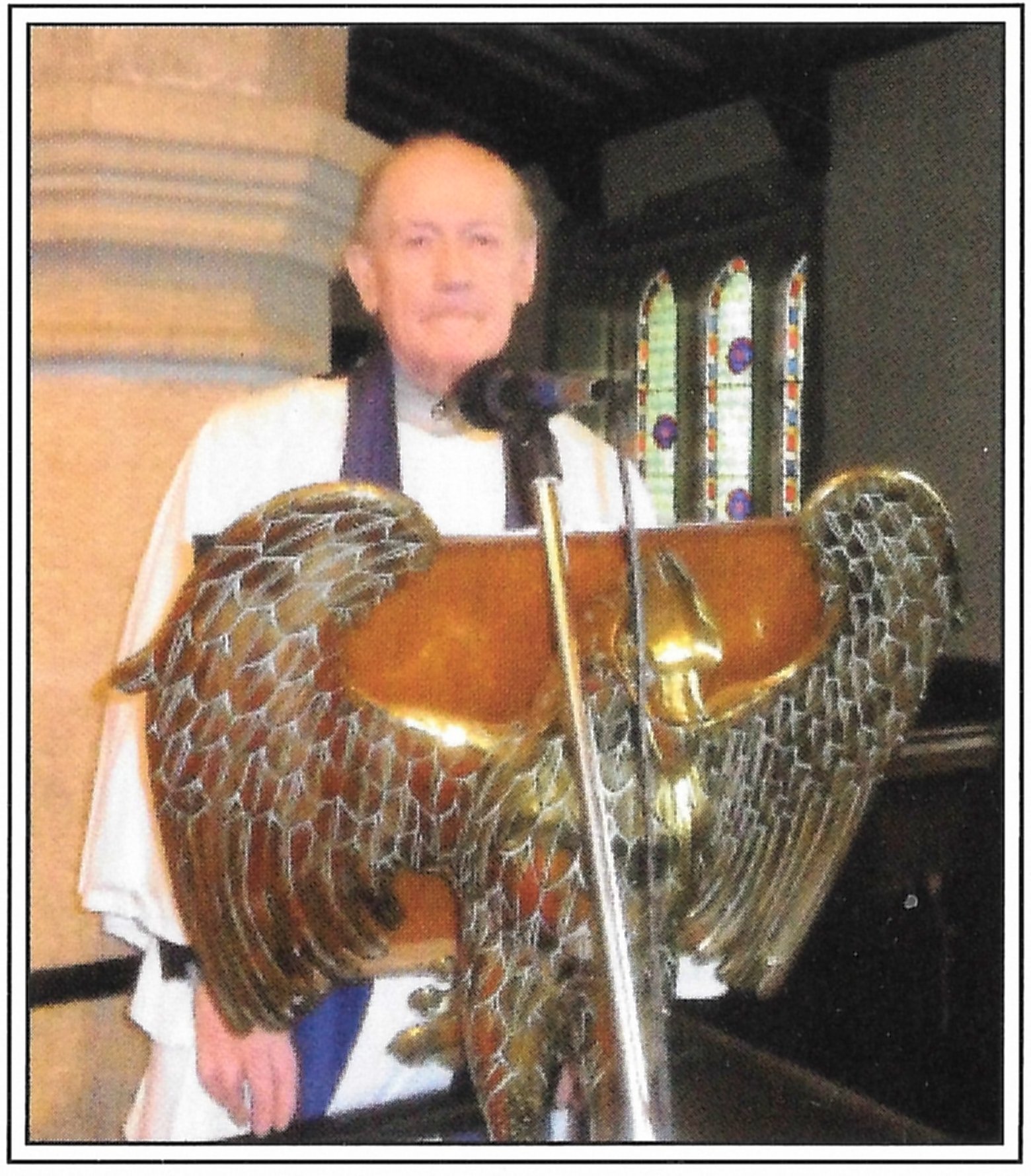
|
Published 2016
Michael Baumber, local historian and good friend to the Farnhill and Kildwick Local History Group, died in August 2015.
With the permission of his next of kin we are pleased to be able publish, in tribute to Michael's research carried out over many years, his completed but unpublished "History of Kildwick Parish" (AD950 to 1660).
|
|

|
First posted 27/02/2016
100 years of local history, as recorded by
entries in the log book
kept by the head teachers of Kildwick School.
|
|
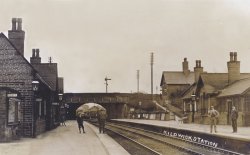
|
First posted 30/01/2016
Boyhood memories of the
Crosshills and Kildwick railway station in the 1950s, written by our good friend Dr. John Laycock.
You might also like to read an
anecdote of the station in the 1940s, by "Brenda".
|
|
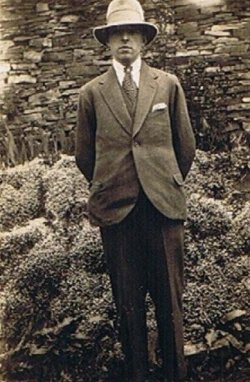
|
First posted 28/02/2015
Written in 1970, when he was in his mid-60s,
Norman Green's memoir
is a fascinating account of what Farnhill was like in the early part of the 20th century - looked at through the eyes of a young boy growing up in the village.
|
|
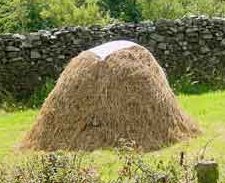
|
First posted 27/12/2014 and 29/06/2013
We've got two articles on haymaking in Farnhill:
A personal recollection of
haymaking at Crag Top Farm in the 1940s and '50s, including a 13-year-old boy's memories of a home-made "tractor".
Originally posted in June 2013,
Haymaking at Hellifield House is a recollection by the late Gladys Crossley, written in 1997, that take us back to the 1930s when she was a
young girl growing up at Hellifield House in High Farnhill.
|
|

|
First posted 26/07/2014
In 2006, when it was undergoing substantial remodelling, workmen uncovered a jam-jar embedded in one of the walls of Moorend - the house at the top of Starkey Lane. The jar was a "time-capsule", containing a number of items dating back to when the house was built in 1934.
Read what the time-capsule contained and what we've been able to find out about the person who deposited it.
|
|

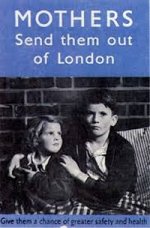
|
First posted 28/12/2013
While the young men and women of the villages went off to do their bit in WWII, two groups of people came
to Farnhill and Kildwick. Read about the
WWII evacuees and POWs.
|
|

|
First posted 30/11/2013
Kildwick Gas Works, which stood on the site occupied by the petrol station - behind St. Andrew's Terrace
Crosshills, closed in 1955 and was demolished in the mid-1960s. Dennis Laycock's father, Fred, was
manager of the works when it closed and, since his own retirement, Dennis has written a notebook providing a short
history of the works and details of its operation.
We are very pleased that Dennis has allowed us to
publish his handwritten notebook.
In addition to the article, we also have a short slideshow, made up of pictures from Dennis's notebook and others of the gas works from our archive.
|
|

|
First posted 25/05/2013
With a lot of help from an academic at Oxford University, the Local History Group has investigated how the water trough in High Farnhill got its name.
Various theories are offered: one of them suggesting that Farnhill was first settled by Vikings, who stayed
to farm the land adjacent to the well.
Read what we have discovered about the origin of this rather odd name.
|
|

|
First posted 30/03/2013
At the history group meeting in February 2013 it was our pleasure to have as our guest Miss Kathleen Auty.
Miss Auty's father was headmaster of Kildwick School between 1926 and 1945, and she lived in the village between
1926 and 1938, before going to Cambridge University to study mathematics. After university she began a long career as a
maths teacher, including 20 years as head of department at Skipton Girls High School. She retired in 1978.
Miss Auty talked to us about her father, and his time
at Kildwick School; what is was like living in the village and attending school before WWII; going to
Cambridge, at a time before women were allowed to be full members of the university; and her career in teaching.
You can
listen to edited extracts from this fascinating and wide-ranging conversation.
|
|
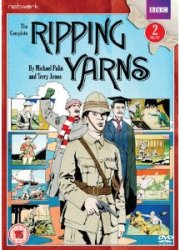
|
Updated 30/03/2013
In 1979, Michael Palin used Kildwick Hall and what was a butcher's shop in Bradley for scenes in
his classic Ripping Yarns film 'Golden Gordon'.
Our original article has been
updated with recollections from someone who worked at Kildwick Hall during the filming and met the cast.
|
|
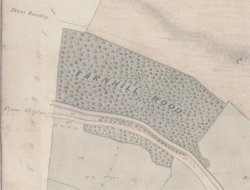
|
Updated 30/11/2013
The oldest trees in Farnhill Wood are about 250 years old, but the wood itself may be considerably older.
This article looks at the evidence from flora, maps, and the walls that surround the wood.
|
|
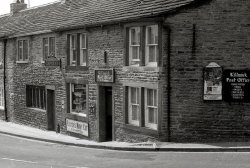
|
Difficult to imagine now, but at one time there were any number of shops in Farnhill and Kildwick,
and you could buy almost anything you wanted in the village. We have two recollections on the shops in the village:
David Atkinson writes about the former shop at 17/19 Newby Road
Keith Bunnett on Farnhill in the 1930s and 1940s
|
|
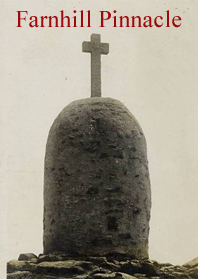
|
Read how the well known
Farnhill monument was built as part of the village's celebrations
of Queen Victoria's Golden Jubilee in 1887.
|
|
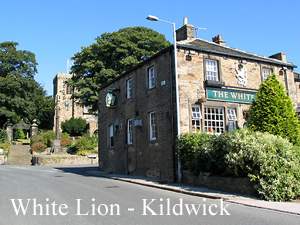
|
Photographs spanning more than a century show the changing face of Kildwick's pub,
the White Lion.
|
|

